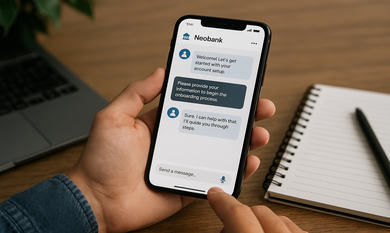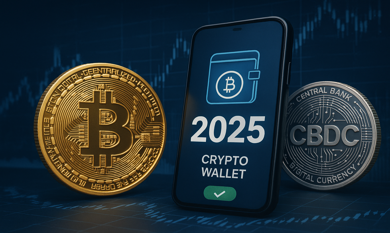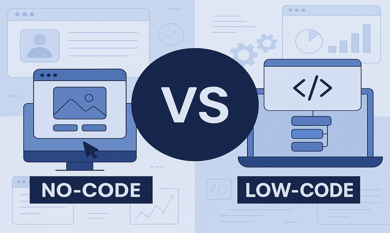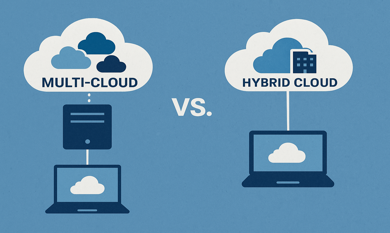Blockchain technology, originally developed as the underlying architecture for cryptocurrencies, has quickly emerged as a disruptive force across various industries, with the banking sector being one of the most notable areas of transformation. While financial institutions were initially skeptical about integrating this decentralized, transparent, and secure system into their traditional models, today, many leading banks are embracing blockchain technology for its potential to enhance operational efficiency, reduce costs, and improve security.
This article will explore how blockchain is revolutionizing banking, highlight some of the key banks leading the charge in adopting this technology, and discuss the various applications that are reshaping the industry.
The Emergence of Blockchain in Banking
Blockchain, at its core, is a decentralized digital ledger system that allows for the secure and transparent recording of transactions across a network of computers. Unlike traditional banking systems that rely on central authorities to validate transactions, blockchain operates on a peer-to-peer basis, enabling trustless transactions that are secured through cryptographic means. This system eliminates the need for intermediaries, such as banks or clearinghouses, which can reduce transaction costs and processing times.
Initially, blockchain was viewed with skepticism due to its association with cryptocurrencies like Bitcoin. However, as technology matured, financial institutions began to see its potential in addressing some of the key challenges they face, such as fraud prevention, cross-border payments, and operational inefficiencies. As a result, banks have started experimenting with blockchain technology to improve the speed, security, and transparency of their services.
Key Benefits of Blockchain in Banking

Blockchain technology offers several advantages for the banking sector. Some of the key benefits include:
- Enhanced Security: Blockchain’s decentralized nature makes it inherently more secure than traditional systems. Each block of data is linked to the previous one, and once a transaction is recorded, it cannot be altered or tampered with. This immutability is particularly important for preventing fraud and maintaining the integrity of financial data.
- Faster Transactions: Traditional banking systems often involve multiple intermediaries, leading to delays in processing transactions, particularly in cross-border payments. Blockchain technology allows for faster settlement times by eliminating the need for intermediaries. Transactions can be completed within minutes or even seconds, compared to the days it typically takes with conventional methods.
- Cost Reduction: By removing intermediaries and reducing the need for manual reconciliation and paperwork, blockchain can significantly lower transaction costs. This is especially beneficial for banks that handle large volumes of transactions, such as in foreign exchange or remittances.
- Transparency: Blockchain’s decentralized nature ensures that all participants in the network have access to the same information, providing transparency in real-time. This can help reduce fraud and ensure compliance with regulatory requirements.
- Improved Customer Experience: With faster transaction times and enhanced security, blockchain can improve the overall customer experience. Customers will be able to make secure and immediate payments, whether domestically or internationally, and will have greater confidence in the transparency of their transactions.
Key Problems in Banking and How Blockchain Solves Them
Despite technological advances, banks still face multiple challenges. Here's how blockchain directly addresses them:
1. Slow & Expensive Cross-Border Transactions
Problem: Sending money across countries can take 3–5 days and involves high fees.
Blockchain Solution: Blockchain enables real-time, low-fee international transfers by eliminating intermediaries. Ripple, for example, has been adopted by many banks to streamline this process.
2. Fraud & Data Tampering
Problem: Centralized systems are prone to hacking, fraud, and data breaches.
Blockchain Solution: Blockchain records are immutable and timestamped, making it nearly impossible to alter transaction histories. Each transaction is verified through consensus, ensuring data integrity.
3. Lack of Transparency
Problem: Customers and regulators often face difficulties accessing real-time transaction data.
Blockchain Solution: Blockchain provides transparent and auditable records, viewable by all parties involved, thus building trust and ensuring accountability.
4. Manual & Repetitive KYC Processes
Problem: Banks often duplicate KYC efforts for the same customers, leading to inefficiencies.
Blockchain Solution: A decentralized identity system allows for one-time verification shared securely with other institutions, saving time and cost.
5. Delayed Settlement & Reconciliation
Problem: Clearing and settlement can take days due to siloed data and intermediaries.
Blockchain Solution: With smart contracts and real-time data sharing, blockchain enables instant reconciliation and reduces back-office costs.
These problems underscore why more financial institutions are collaborating with a best web and mobile app development company Dallas to design custom blockchain-powered solutions that align with regulatory, operational, and customer experience goals.
Banks Leading the Blockchain Adoption
Several global financial institutions are taking blockchain innovation seriously. Here's a look at the banks paving the way:

JPMorgan developed JPM Coin to facilitate instant blockchain-based payments for institutional clients. It also launched Onyx, a platform dedicated to digital assets and blockchain infrastructure.

Santander’s One Pay FX uses RippleNet to offer same-day, cross-border payments in several countries. It’s one of the first major banks to roll out a blockchain-based payment app.
● HSBC

HSBC is actively experimenting with blockchain in trade finance, launching projects like Contour to digitize and automate trade documentation processes.
● Goldman Sachs

The bank is developing a digital asset platform and actively exploring the tokenization of traditional financial products like bonds and equities.
● Barclays

Barclays has filed multiple blockchain patents and invested in fintech startups exploring blockchain-based payments and fraud prevention tools.
Future Outlook: Blockchain Is Here to Stay
The future of banking is decentralized, automated, and transparent. Blockchain is expected to drive further innovation in lending, asset management, insurance, and regulatory reporting. With governments showing increased interest in central bank digital currencies (CBDCs) and financial inclusion, blockchain’s relevance in finance will only grow stronger.
Forward-thinking banks are not just using blockchain for backend processes—they’re exploring entirely new customer experiences with it. In this digital age, working with a strategic partner like a blockchain development company in Dallas gives banks the agility and technical depth needed to stay ahead.
Conclusion
Blockchain technology is transforming the banking industry by solving some of its most pressing problems. By addressing issues such as slow transactions, high costs, fraud, and transparency, blockchain provides a secure and efficient alternative to traditional banking practices. As the technology continues to mature, partnering with a blockchain development company in Dallas, such as Theta Technolabs, can help banks explore customized solutions to stay ahead of the curve and ensure a more secure, transparent, and efficient future in financial services.






















_Choosing%20the%20Right%20App%20Development%20Company_%20A%20Comprehensive%20Guide_Q1_24.jpg)
_Chatbots%20for%20Event%20Management%20and%20Hospitality%20Services_Q1_24.jpg)
_Best%20iOS%20App%20Development%20Company_%20Enhancing%20User%20Engagement%20with%20Push%20Notifications_Q2_24.jpg)
_Key%20Trends%20in%20Healthcare%20Software%20Development%20for%20the%20Future_Q2_24.jpg)
_How%20much%20does%20it%20cost%20to%20create%20an%20android%20app%20in%202024%20for%20Startups_%20A%20detailed%20guide_Q2_24.jpg)
_Integrating%20Chatbots%20Into%20Your%20Application.jpg)


_Enhancing%20Driver%20Safety%20and%20Compliance%20with%20Web%20Apps%20in%20the%20Logistics%20Sector_Q3_24.jpg)
_Web%20Apps%20for%20Retail%20and%20eCommerce_%20Streamlining%20Operations%20and%20Reducing%20Costs_Q3_24.jpg)
_How%20AI%20is%20Enhancing%20Construction%20Site%20Surveillance%20and%20Security%20in%20Dallas_Q3_24-1.jpg)
_The%20Impact%20of%20Cross-Platform%20Apps%20on%20Real%20Estate%20Market%20Trends%20in%20Dallas_Q3_24-1.jpg)
_Streamlining%20Appointment%20Scheduling%20with%20Cloud%20Computing%20in%20Dallas%20Healthcare_Q4_25.jpg)
_How%20Cloud%20Solutions%20Are%20Enhancing%20Remote%20Patient%20Monitoring%20in%20Healthcare_Q4_25.jpg)































.png)












.png)

.png)
.png)
.png)
.png)


.png)
.png)
.png)

.png)






.png)
.png)























